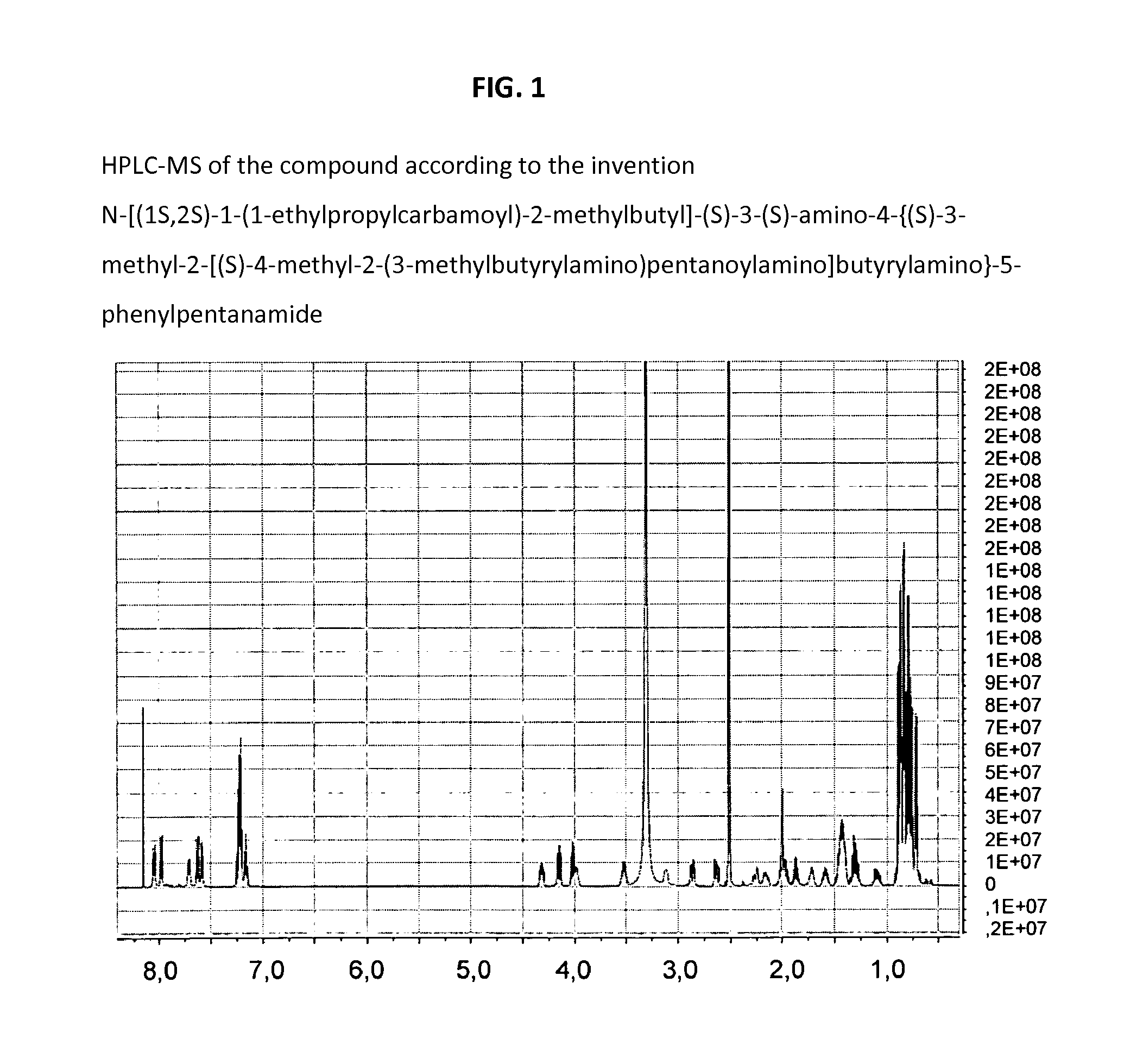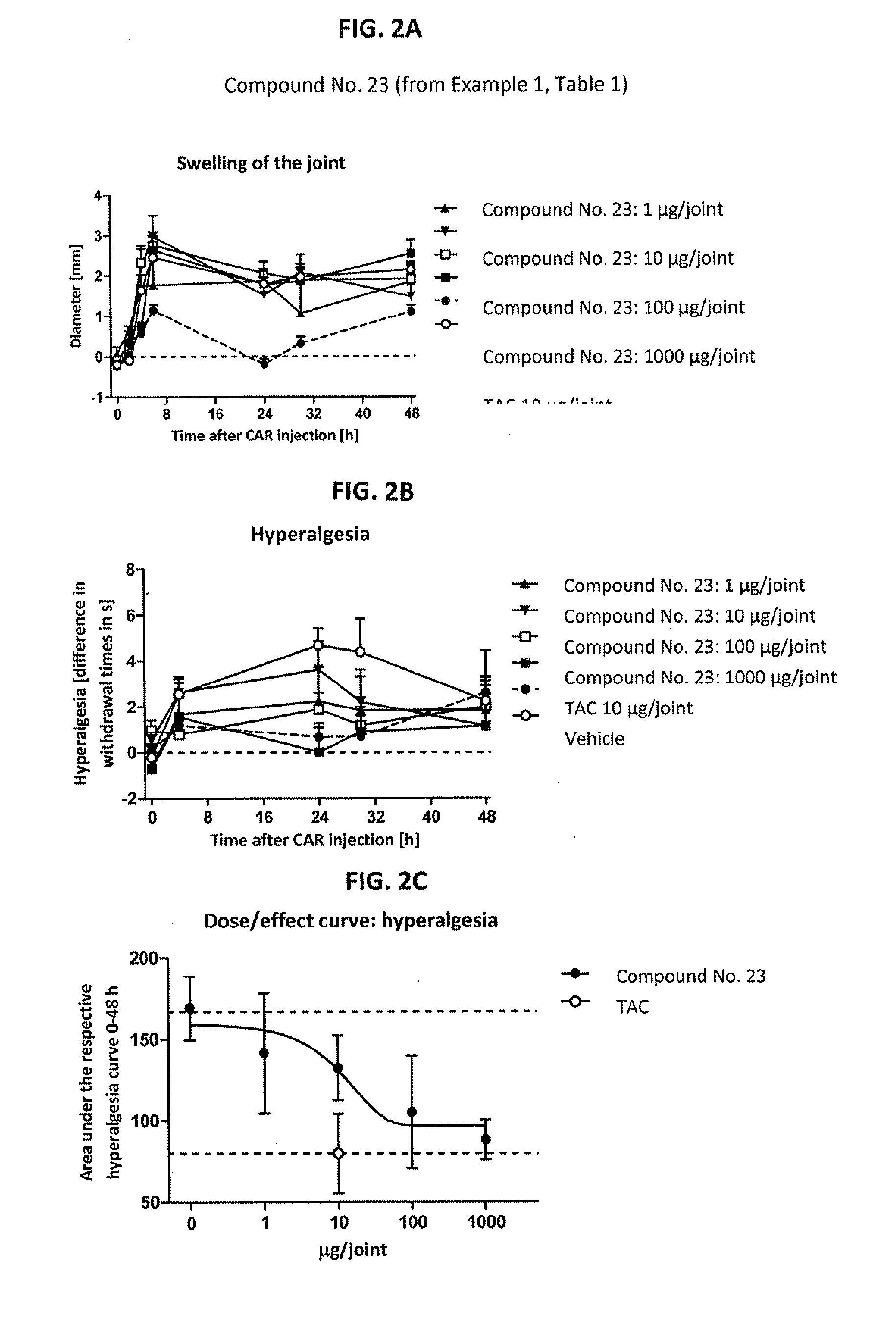Aminostatin derivatives for the treatment of arthrosis
- Summary
- Abstract
- Description
- Claims
- Application Information
AI Technical Summary
Benefits of technology
Problems solved by technology
Method used
Image
Examples
example 2
Preparation of the Compounds According to the Invention
[0235]The compounds according to the invention can be prepared, for example, by methods known to the person skilled in the art by the following synthesis sequences. The examples indicated describe the synthesis, but do not restrict the latter to the examples.
Synthesis Sequence:
[0236]
[0237]Starting from the protected aminostatin building block A, the novel peptide bond is built up with corresponding amines, amino acid derivatives, dipeptides, tripeptides or tetrapeptides (typically protected on the C terminal) with the aid of a coupling method known to the person skilled in the art, such as, for example, a DAPECI coupling. In the second step, the BOC protecting group is cleaved off under suitable conditions (for example by HCl / dioxane or TFA / DCM), and the building block obtained is coupled to a corresponding acid, amino acid derivatives, dipeptides, tripeptides or tetrapeptides (typically each protected on the N terminal). Partic...
example 3
In-Vitro Fluorescence Assay for Identification of Cathepsin D Inhibitors
[0254]In order to identify modulators of cathepsin D activity, a continuous enzymatic test was carried out with a synthetic peptide which carries a fluorescent group (MCA=(7-methoxycoumarin-4-yl)acetyl) which is quenched by energy transfer from a Dpn (2,4 dinitrophenyl) group on the same molecule, in Greiner 384-well nb microtitre plates. Cleavage of the peptidic substrate by cathepsin D causes an increase in the fluorescence intensity. In order to determine the efficacy of substances, the time-dependent increase in the fluorescence intensity in the presence of the substance was compared with the time-dependent increase in fluorescence in the absence of substances. The reference substance used was pepstatin A (Sigma-Aldrich). The substrate used was MCAGKPILFFRLK(Dnp)d-R—NH2 (Enzo Life Sciences, Lörrach). The enzyme employed was cathepsin D isolated from the human liver (Sigma-Aldrich) in a final concentration of...
example 4
[0256]In order to investigate the effect of potential cathepsin D inhibitors on cartilage degradation, a pH-induced model based on bovine explants is used. The pH of the medium in which the explants are cultivated is matched here to the pathophysiological pH of an arthrotic knee. This pH is pH 5.5. In this ex vivo model, potential cathepsin D inhibitors are subsequently investigated for their action with respect to stopping of the cartilage degradation process. If the cartilage is destroyed, glycosaminoglycans (GAGs) are released into the cell culture supernatant. The amount of GAGs liberated can be determined quantitatively with the aid of DMMB (dimethylmethylene blue hydrochloride). If sulfated GAGs are detected using dimethylmethylene blue hydrochloride, the decrease in the absorption at 633 nm is utilised. Since work can also be carried out at very low GAG concentrations, a dye / GAG complex does not precipitate out even after extended incubation of DMMB wit...
PUM
| Property | Measurement | Unit |
|---|---|---|
| Force | aaaaa | aaaaa |
| Composition | aaaaa | aaaaa |
| Ratio | aaaaa | aaaaa |
Abstract
Description
Claims
Application Information
 Login to View More
Login to View More - R&D
- Intellectual Property
- Life Sciences
- Materials
- Tech Scout
- Unparalleled Data Quality
- Higher Quality Content
- 60% Fewer Hallucinations
Browse by: Latest US Patents, China's latest patents, Technical Efficacy Thesaurus, Application Domain, Technology Topic, Popular Technical Reports.
© 2025 PatSnap. All rights reserved.Legal|Privacy policy|Modern Slavery Act Transparency Statement|Sitemap|About US| Contact US: help@patsnap.com



